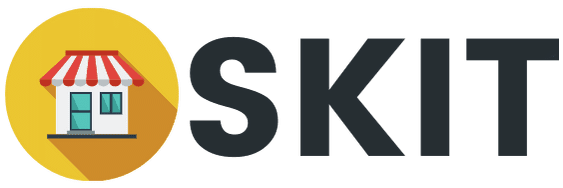A well-defined business plan remains essential for entrepreneurial success, even as market conditions continuously evolve.
This 9-step guide for 2025 aims to help professionals develop competitive business plans to drive strategic growth.
Key Takeaways
Hide- Clear articulation of long-term objectives and aspirations is essential in a business plan.
- Analyzing target demographics and industry trends helps in identifying the target audience for tailored strategies.
- A unique value proposition and brand voice that resonates with the audience are crucial for success.
- Detailed financial projections and a clear revenue model are necessary for attracting potential investors.
Beginning with clearly articulating vision, it then covers conducting market research, identifying target customers, outlining offerings, building marketing strategies and financial projections.
By walking through these core components, entrepreneurs can organize the key practical elements required to translate high-level ideas into actionable roadmaps.
With innovation and adaptability now imperative in business, taking an organized, comprehensive approach to business planning enables agility and sustained success amid shifting consumer and industry trends.
By distilling information into compelling summaries and reviewing regularly, professionals can craft resilient blueprints to unlock their entrepreneurial potential.
9 Steps on How to Write a Business Plan in 2025

Crafting a business plan can provide critical strategic value for entrepreneurs on the path to launching and scaling a company.
By outlining core elements from proposed offerings to market dynamics, a plan enables founders to evaluate viability, identify risks, allocate resources efficiently and align on a growth strategy.
While formal plans are not mandatory, many successful founders leverage structured planning to inform effective decision-making pre-launch.
This guide covers pragmatic steps for research-based business plan development, offering tips and real-world examples to help translate high-potential ideas into actionable roadmaps for sustainable ventures.
Taking an organized approach can empower entrepreneurs to pursue ambitions grounded in practical possibility.
1. Define the Business Vision
Defining a clear vision is the foundational first step in crafting a comprehensive business plan that articulates the long-term objectives and aspirations of your company.
This vision serves not only as a guiding beacon but also as a strategic framework from which all operational plans, market positioning, and growth initiatives will emanate.
In an era where innovation is paramount, the vision must reflect a forward-thinking mindset, integrating emerging trends and technologies that could shape the industry’s landscape.
A robust vision statement is both aspirational and achievable, grounded in the reality of the business’s capabilities while also stretching its ambitions.
It should encapsulate the essence of what the business strives to become, the impact it intends to have on its customers, and the unique value proposition that sets it apart from competitors.
This requires a synthesis of introspection and foresight, where current strengths are leveraged to capitalize on future opportunities.
2. Conduct Market Research
Building on the foundation of a well-articulated vision, thorough market research is the next critical step to ensure your business plan is aligned with current economic realities and consumer behaviors.
This endeavor is not merely an exercise in data collection but a strategic probe into the viability of your business concept.
It encompasses analyzing target demographics, understanding industry trends, assessing competitors, and identifying potential barriers to entry.
The process should be methodical: begin by segmenting the market to understand the specific niches you intend to serve.
Utilize both quantitative and qualitative research methods to draw a comprehensive picture. Quantitative data, such as market size and consumer spending patterns, will lend objectivity to your projections.
Qualitative insights, on the other hand, can be gleaned from customer interviews or focus groups, offering a deeper understanding of consumer motivations and preferences.
Furthermore, innovative tools and analytics can provide real-time market feedback, enabling you to refine your business model adaptively.
In an era where market dynamics are rapidly shifting, your research methodology should be agile, allowing for iterative learning and continuous improvement of your business strategy.
This rigorous approach will solidify your business plan’s foundation, making it a robust blueprint for success in an ever-evolving marketplace.
3. Identify Your Audience
Identifying your target audience is a critical step in crafting a business plan that resonates and persuades. By pinpointing your target demographics, you can align your business strategies with the specific needs and preferences of your intended market segment.
A well-defined value proposition, tailored to your audience, enhances the potential for market penetration and sustainable growth.
Determine Target Demographics
In the process of crafting a comprehensive business plan, pinpointing your target demographics is a critical step that facilitates tailored marketing strategies and product development.
A precise understanding of your audience lays the groundwork for innovation and can significantly enhance your competitive edge. Consider the following elements:
- Age range: Identifying the age bracket can help shape product features and marketing channels.
- Geographic location: Understanding the locale can influence logistics and regional marketing tactics.
- Income level: Tailoring pricing strategies to match the financial capacity of your target audience.
- Psychographics: Leveraging insights into consumer behavior and values to foster product alignment with customer lifestyles.
This analytical approach ensures that your business resonates with the intended market segment.
As we transition to understanding audience needs, remember that comprehending the nuances of your demographics underpins effective need assessment.
Understand Audience Needs
Comprehension of your audience’s needs is pivotal to developing products and services that offer real value and foster customer loyalty.
A methodical approach to understanding these needs begins with segmenting the audience, analyzing their behaviors, and recognizing their underlying challenges.
| Customer Segment | Primary Need | Innovation Potential |
|---|---|---|
| Millennials | Digital Ease | High-Tech Solutions |
| Professionals | Time Saving | Automated Services |
| Families | Affordability | Cost-Effective Design |
This strategic tableau assists in identifying gaps in the market, enabling businesses to innovate with precision. By harnessing data and focusing on the specific preferences of these segments, entrepreneurs can craft offerings that resonate deeply with their intended market.
Tailoring your value proposition seamlessly transitions from understanding needs to articulating how your business will meet them, setting the stage for the next crucial step in your business plan.
Tailor Value Proposition
Crafting a compelling value proposition necessitates pinpointing your audience’s unique preferences and pain points to ensure your business offering aligns with their expectations and demands.
A value proposition that resonates with your target market is the cornerstone of a strategic business plan. It guides the development of products and services, ensuring they deliver tangible benefits and innovative solutions.
To tailor an effective value proposition, consider the following elements:
- Demographic Insights: Understand the age, location, and socio-economic status of your potential customers.
- Psychographic Analysis: Determine the lifestyle, values, and aspirations that drive your audience’s behavior.
- Competitive Differentiation: Identify how your product stands out from competitors in meeting customer needs.
- Feedback Mechanisms: Implement systems to capture ongoing customer feedback, ensuring your value proposition evolves with market dynamics.
4. Outline Your Offerings
In crafting an effective business plan, articulating your offerings is critical to conveying the value proposition of your products or services.
This section should provide a detailed exposition of product features, aligning them with the needs of your target market to demonstrate their practical utility.
Similarly, for services, a strategic focus on the benefits should be presented, showcasing how they confer a competitive advantage and fulfill client requirements.
Detail Product Features
Each product or service your business plans to offer must be accompanied by a thorough description of its distinctive features and benefits.
This step is critical in illustrating the value proposition to stakeholders and potential investors, and it positions your offerings competitively in the market.
Detailing product features should be done with an innovative lens, showcasing how your offerings stand out. Consider the following attributes:
- Innovative Design: Outline how the design breaks new ground or offers a novel user experience.
- Advanced Technology: Specify any cutting-edge technology that enhances functionality or user interaction.
- Customization Options: Highlight the ability for users to tailor the product or service to their specific needs.
- Sustainability: Describe eco-friendly materials or processes that reflect a commitment to environmental responsibility.
A strategic, analytical, and comprehensive approach will resonate with an audience keen on innovation.
Highlight Service Benefits
Following the detailed examination of product features, the next critical step is to articulate the specific benefits your services provide to customers, delineating how they address needs and create value.
This process involves a strategic translation of features into tangible and intangible advantages that resonate with the target market.
Your business plan must convey a compelling narrative of customer-centric benefits, such as enhanced efficiency, cost savings, elevated user experience, or access to novel technological advancements.
Each benefit should be directly linked to customer pain points, illustrating a clear pathway from service feature to customer gain.
Ensure this section is analytical, identifying the unique selling propositions that differentiate your offerings in a competitive landscape, and is crafted with an innovative edge to captivate stakeholders who prioritize forward-thinking solutions.
5. Detail Your Marketing Strategy
How will your business attract and retain customers? Your marketing strategy should articulate specific tactics to penetrate the target market effectively.
This involves a multifaceted approach, blending traditional methods with cutting-edge techniques to capture attention in a crowded marketplace.
The goal is not just to reach potential customers but to engage them deeply and convert their interest into sales.
To implement a successful marketing strategy, consider the following components:
- Target Market Analysis: Deeply understanding customer demographics, behavior patterns, and preferences to tailor marketing efforts.
- Brand Positioning: Establishing a unique value proposition and brand voice that resonates with your audience and differentiates you from competitors.
- Multi-Channel Marketing: Leveraging a mix of digital and physical platforms to maximize reach and engagement, including social media, SEO, email campaigns, and experiential events.
- Metrics and KPIs: Setting measurable goals and utilizing analytics to track performance and adjust tactics for optimal results.
A comprehensive marketing strategy is not static; it requires continuous analysis and refinement to stay ahead of market trends and consumer behavior shifts. With an innovative and adaptive approach, your business can thrive in a dynamic commercial landscape.
Next, we must consider how to organize operational logistics to support these strategic marketing efforts effectively.
6. Organize Operational Logistics
Upon establishing a robust marketing strategy, it is critical to align operational logistics to ensure efficient execution and delivery of products or services.
A strategic approach to logistics can drastically reduce lead times, optimize inventory levels, and improve overall customer satisfaction.
The integration of innovative technologies and methodologies is vital for streamlining operations and achieving a competitive edge.
Organizing operational logistics requires a comprehensive analysis of the supply chain, from procurement to distribution.
By dissecting each component, businesses can identify potential bottlenecks and implement solutions that enable scalability and flexibility.
Advanced analytics can forecast demand more accurately, allowing for a more responsive supply chain that adapts to market changes swiftly.
Here is a table to illustrate the key areas of focus within operational logistics:
| Supply Chain Component | Innovation Integration | Strategic Outcome |
|---|---|---|
| Procurement | AI-driven forecasting | Cost Reduction |
| Inventory Management | IoT-enabled tracking | Efficiency Gain |
| Distribution | Autonomous delivery | Speed Improvement |
This table encapsulates the essence of a forward-thinking operational framework, promoting an analytical and strategic approach to logistics that aligns with the innovative aspirations of modern businesses.
7. Project Financials
Why is a detailed financial projection a cornerstone of any comprehensive business plan?
It not only validates the business concept in quantitative terms but also serves as a vital tool for planning and decision-making.
Accurate financial forecasting enables entrepreneurs to anticipate cash flows, manage resources, and attract potential investors by demonstrating fiscal prudence and strategic vision.
When constructing the financial section of a business plan, consider the following key elements:
- Revenue Projections: Articulate a clear revenue model, detailing the drivers of income and the scalability of the business.
- Expense Forecasting: Outline all anticipated operational, production, and marketing costs, ensuring a realistic assessment of financial obligations.
- Cash Flow Analysis: Provide a monthly cash flow projection to track the inflow and outflow of capital, crucial for maintaining liquidity.
- Break-even Analysis: Determine the point at which the business becomes profitable, a critical benchmark for assessing risk and return on investment.
An analytical, strategic, and comprehensive approach to projecting financials can be the linchpin for an enterprise’s success.
It encompasses a forward-looking perspective, integrating innovative financial modeling to anticipate and navigate a dynamic economic landscape.
Navigating these fiscal waters effectively sets the stage to craft your executive summary, which encapsulates the essence and financial viability of your business vision.
8. Craft Your Executive Summary
The executive summary, serving as the cornerstone of your business plan, succinctly distills the most compelling parts of your project, including key financial projections and strategic objectives.
This section should encapsulate the essence of your vision, deftly outlining the path your business intends to take, and why it is uniquely positioned to succeed.
A well-crafted executive summary is both a map and a hook; it provides a clear direction for the business while enticing readers to delve deeper into your plan.
| Element | Purpose |
|---|---|
| Mission Statement | To convey the foundational principles and aims of the business. |
| Financial Summary | To highlight projected revenues, profitability, and growth rates. |
| Strategic Goals | To outline the key milestones and objectives for the near term. |
An analytical approach to the executive summary ensures that it is not merely descriptive but also serves as an analytical framework, setting the stage for the business’s strategic plan.
It should be comprehensive, leaving no room for ambiguity regarding the business’s direction, yet remain concise enough to maintain the reader’s attention.
In crafting this summary, innovative language is crucial. It should reflect a forward-thinking mentality, indicative of a business that is not just prepared for the future, but actively shaping it.
To ensure your executive summary fulfills its purpose, the next step is to review and refine its components for maximum impact.
9. Review and Refine
Each component of the executive summary must undergo meticulous scrutiny to ensure clarity, cogency, and alignment with the broader business strategy.
The review and refinement process is critical, serving as the quality control phase that can significantly enhance the plan’s impact on potential investors and stakeholders.
Employing a strategic lens, the following elements should be assessed:
- Executive Summary Precision: Ensure that key points are distilled effectively, providing a clear snapshot of the business and its objectives.
- Market Analysis Rigor: Validate the completeness of the market analysis, confirming that trends, demographics, and competitive landscapes are accurately depicted and sourced.
- Financial Projections Validation: Scrutinize financial assumptions and forecasts for realism and defensibility, adjusting for market conditions and potential risks.
- Strategic Alignment: Check that every section of the business plan aligns with the overarching strategic goals, including marketing strategies and operational plans.
In this phase, it is imperative to be both analytical and comprehensive, dissecting each segment of the plan to ensure it withstands scrutiny.
Language should not only be precise but also reflect an innovative mindset, signaling to readers that the business is forward-thinking and adaptable to emerging trends and market dynamics.
Final Words
In conclusion, the construction of a robust business plan is a methodical process that demands a strategic approach encompassing:
- A clear articulation of vision
- In-depth market research
- Precise audience identification
- A detailed account of product or service offerings
- A well-formulated marketing strategy
- Meticulous operational planning
- Sound financial projections
The executive summary encapsulates the plan’s essence, while iterative reviews ensure precision and alignment with business objectives, thereby laying a solid foundation for enterprise success.





